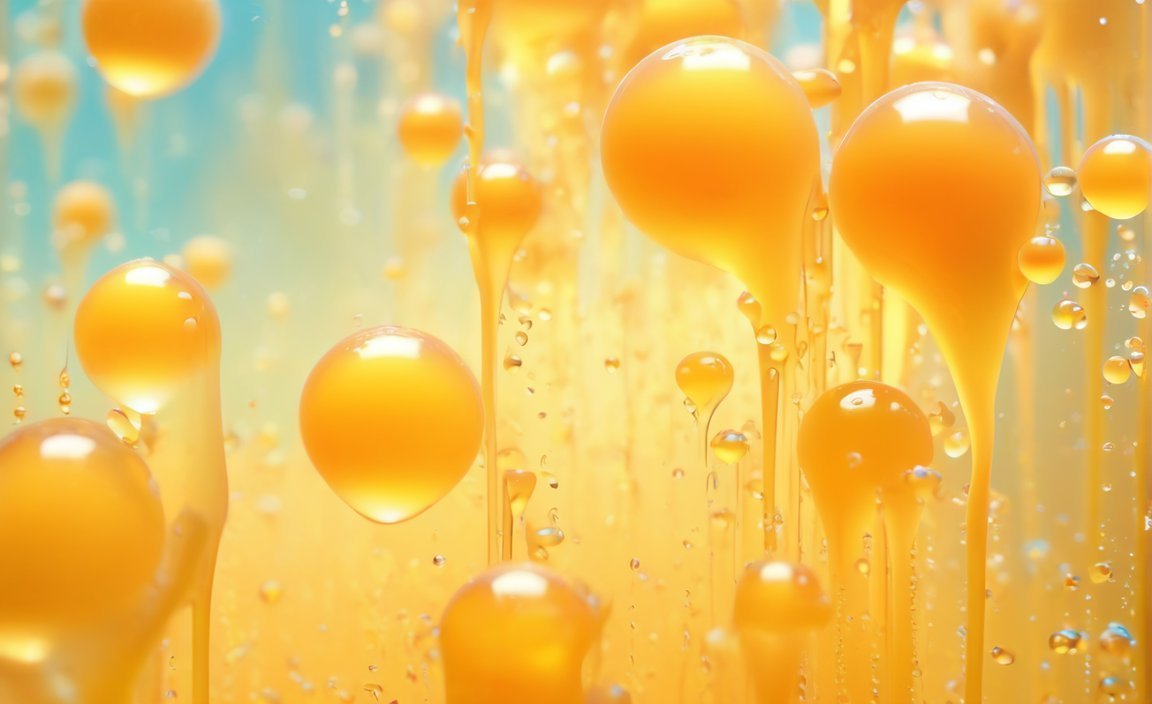Discover the essential knowledge every HVAC technician needs to understand the ins and outs of condensation with our article, “Unveiling the Top 10 Condensation Facts: Crucial Insights for HVAC Technicians.” Delving into the realm of moisture control and thermodynamics, this informative piece reveals the ten most critical facts about condensation that will enable technicians to diagnose and tackle related issues with confidence and expertise. Whether you’re a seasoned professional or just starting out in the field, this article will provide you with the necessary insights to navigate the complex world of condensation in heating and cooling systems.

Key Takeaways:
- Condensation is a natural process that helps determine temperature, with its occurrence leading to higher temperatures and its absence causing temperature loss.
- Signs of condensation include steam puddles, water on windowsills, and the presence of mold.
- Multiple factors can contribute to condensation, such as house thermal currents and cold spots in rooms lacking heat.
- Damp rooms and leaking roofs or pipes are particularly susceptible to condensation.
- Natural ventilation can help control condensation by improving airflow in rooms.
- It is crucial to inspect and address any leaks or damp areas to prevent condensation.
- The temperature at which condensation occurs is called the dew point.
- Condensation is a stage in the water cycle where water vapor cools down and changes into liquid form.
- Condensation is the opposite of evaporation.
- Comprehensive information about condensation can be found from sources such as Fact File and Kids Kiddle.
10 Facts about Condensation
Condensation is a fascinating natural process that plays a crucial role in determining temperature and impacting our daily lives. As an experienced HVAC technician, I’ve gathered essential insights about condensation that every technician should know. Let’s dive into the top 10 facts about condensation and unravel its significance in various contexts.
Fact 1: Condensation Determines Temperature
Condensation has a direct impact on temperature. The presence of condensation leads to higher temperatures, while the absence of condensation causes temperature loss. Understanding this relationship is vital for HVAC technicians to provide effective temperature control solutions.
Fact 2: Identifying Condensation
You can easily identify condensation by looking for steam puddles, water on windowsills, and the presence of mold. These signs indicate the occurrence of condensation, which can help pinpoint areas that need attention.
Fact 3: Multiple Reasons for Condensation
Condensation can occur for various reasons. One common cause is house thermal currents, where temperature differences within a building lead to the formation of condensation. Additionally, cold spots in rooms lacking heat contribute to the occurrence of condensation.
Fact 4: Vulnerable Spaces
Certain spaces are more susceptible to condensation. Damp rooms and areas with leaking roofs or pipes are prime locations where condensation can occur. Identifying and addressing these vulnerabilities is crucial in preventing further damage and maintaining a comfortable indoor environment.
Fact 5: Controlling Condensation with Natural Ventilation
One effective way to control condensation is by providing natural ventilation to rooms. Improved airflow helps reduce moisture buildup, thereby minimizing the chances of condensation. HVAC technicians can recommend ventilation mechanisms based on the specific needs of a building.
Fact 6: Address Leaks and Damp Areas
Inspecting and addressing leaks and damp areas is paramount for managing condensation effectively. Fixing leaks and reducing moisture sources not only helps prevent condensation but also ensures the longevity of the HVAC system and the overall structure of a building.
Fact 7: Understanding the Dew Point
The temperature at which condensation occurs is known as the dew point. HVAC technicians should be well-versed in understanding and monitoring the dew point to effectively manage condensation. This knowledge enables them to implement appropriate measures to control temperature and prevent condensation-related issues.
Fact 8: Condensation within the Water Cycle
Condensation is a significant stage in the water cycle. It occurs when water vapor in the air cools down and changes into its liquid form. This process is the reverse action of evaporation, where liquid water transforms into water vapor. Understanding this connection helps us grasp the broader implications of condensation in the environment.
Fact 9: Expert Resources for Comprehensive Information
To expand your knowledge of condensation and its various aspects, there are expert resources available. Websites like Fact File and Kids Kiddle provide comprehensive information on condensation, covering a wide range of topics.
Fact 10: The Significance of Condensation in HVAC Systems
HVAC technicians play a vital role in managing and mitigating the impact of condensation in heating and cooling systems. By understanding the principles of thermodynamics and mastering moisture control techniques, HVAC technicians can provide effective solutions to combat condensation-related issues, ensuring optimal performance and energy efficiency.
Remembering these 10 essential facts about condensation will empower HVAC technicians to tackle condensation-related challenges head-on and deliver high-quality service to their clients.
Now that we’ve explored the fascinating world of condensation, let’s apply these insights in our daily HVAC practices, ensuring comfortable and efficient indoor environments for all.
Here are some fascinating facts about various biomes that will surely pique your curiosity:
10 facts about biomes – Discover the amazing diversity and unique characteristics of different biomes on Earth.
10 facts about marine biology – Dive into the captivating world of marine organisms and their ecosystems.
10 facts about marine life – Explore the wonders of marine life and learn about its intricate web of interactions.
10 facts about ocean life – Plunge beneath the waves to uncover the mysteries that lie within the vast oceanic realm.
10 facts about temperate deciduous forest – Immerse yourself in the enchanting beauty and seasonal transformations of temperate deciduous forests.
10 facts about temperate forests – Unearth interesting facts about temperate forests and the wide range of flora and fauna that inhabit them.
10 facts about temperate rainforest – Journey into the lush green world of temperate rainforests and discover their remarkable biodiversity.
10 facts about the african savanna – Embark on an adventure across the African savanna and witness the awe-inspiring wildlife that thrives in this vast grassland.
10 facts about the marine life – Plunge into the deep blue sea and uncover fascinating facts about the intricate marine ecosystems.
10 facts about the ocean animals – Dive beneath the waves to uncover captivating information about the diverse range of ocean animals.
10 facts about the tropical savanna – Explore the vibrant landscapes and unique biodiversity of the tropical savanna.
Get ready to explore these intriguing topics and broaden your knowledge of the natural world!
The Effects of Condensation on Different Surfaces
Condensation is a natural process that occurs when water vapor cools down and changes into liquid form. As HVAC technicians, it’s crucial for us to understand the effects of condensation on different surfaces. Let’s dive into the top 10 facts about condensation and how it impacts various surfaces.
1. Condensation and Temperature
Condensation and temperature go hand in hand. When condensation increases on a surface, the temperature rises, while a lack of condensation results in temperature loss. So, understanding condensation is essential for accurately determining temperature levels in heating and cooling systems.
2. Detecting Condensation
Detecting condensation is relatively easy. Keep an eye out for steamed puddles and water droplets forming on windowsills. These visual cues are clear signs of condensation in action. Being able to identify condensation helps us assess potential issues and address them promptly.
3. Causes of Condensation
Condensation can occur due to various reasons. One primary cause is thermal currents in a house, which create temperature differences and can lead to condensation. Identifying cold spots in the house is crucial because they are prone to condensation and can indicate underlying problems.
4. Controlling Condensation
Controlling and minimizing condensation is a priority for many homeowners. Natural ventilation, such as opening windows to allow air circulation, is an effective way to reduce condensation by providing better airflow and minimizing moisture buildup. Educating homeowners about proper ventilation practices can help manage condensation issues effectively.
5. Damp Rooms and Condensation
Damp rooms are particularly vulnerable to condensation problems. When a room remains damp for a prolonged period, it becomes more likely to experience condensation. Leaking roofs and pipes can also contribute to condensation issues. Addressing and fixing these sources of dampness is essential for preventing further condensation-related problems.
6. Importance in the Water Cycle
Condensation plays a crucial role in the water cycle. It occurs when water vapor in the air cools down and changes into liquid form. This natural process ensures the circulation of water between the Earth’s oceans, atmosphere, and land. Understanding condensation helps us appreciate its significance in maintaining the availability of freshwater on Earth.
7. Surface Condensation
Surface condensation occurs when a subcooled surface comes into contact with vapor. It plays a significant role in heat transfer devices and systems, as it has a much higher heat transfer coefficient than single-phase convective heat transfer. This understanding helps us design and optimize HVAC systems for efficient heat exchange.
8. The Effects on Different Surfaces
Condensation can have different effects on various surfaces. It causes water droplets to form on windows, walls, and other cold surfaces. These water droplets can lead to potential damage and mold growth if not properly controlled. Understanding the effects of condensation on different surfaces is crucial for ensuring the longevity and efficiency of heating and cooling systems.
9. Relationship to Humidity and Ventilation
Humidity levels and ventilation significantly impact condensation. When warm, moist air encounters cooler surfaces like walls or windows, condensation is more likely to occur. High humidity levels and poor ventilation exacerbate condensation issues. Emphasizing the relationship between humidity, ventilation, and condensation helps homeowners and HVAC technicians manage indoor moisture effectively.
10. Importance in Nature
Despite the challenges it can pose, condensation is vital in nature. It helps regulate temperatures and plays a key role in the water cycle. Without condensation, we wouldn’t have the necessary freshwater resources that sustain life on Earth. Recognizing the importance of condensation in nature fosters a deeper appreciation for this natural process.
Key Takeaways:
- Condensation and temperature are closely related, making it essential to understand condensation for accurate temperature assessment.
- Detecting condensation through visual cues helps identify potential issues and address them promptly.
- Thermal currents in houses and cold spots are common causes of condensation.
- Natural ventilation, such as opening windows, can reduce condensation by improving airflow.
- Damp rooms and areas with leaks are more susceptible to condensation problems.
- Condensation plays a crucial role in the water cycle, ensuring the availability of freshwater on Earth.
- Surface condensation has a significant impact on heat transfer devices and systems.
- Condensation on different surfaces, such as windows and walls, can lead to damage and mold growth.
- High humidity levels and poor ventilation contribute to increased condensation.
- Despite its challenges, condensation is vital for regulating temperatures and maintaining the water cycle in nature.
Sources:
– Fact File. “10 Facts about Condensation.” [^1^]
– National Geographic Society. “Condensation – National Geographic Society.” [^2^]
Methods to Prevent Condensation
Condensation can be a significant challenge for HVAC technicians, but there are effective methods to prevent it. By understanding these methods and implementing them, you can ensure optimal performance and longevity of heating and cooling systems. In this article, we will explore ten crucial facts about condensation and provide actionable tips on preventing it.
Fact 1: Increase the Temperature of the Object
One of the most effective ways to prevent condensation is by increasing the temperature of the object to be protected. By keeping it above the dew point temperature, you can prevent moisture in the air from condensing on the object. This can be achieved by using heating systems or insulation to maintain a higher temperature.
Fact 2: Reduce the Dew Point Temperature of the Air
To minimize the likelihood of condensation, it’s essential to reduce the dew point temperature of the air surrounding the object. Implementing an air-drying system, such as a dehumidifier, can remove moisture from the air and make it less prone to condensation. It’s an effective method for controlling humidity levels and preventing condensation-related issues.
Fact 3: Maintain Consistent Home Temperature
Fluctuations in temperature can contribute to condensation formation. By keeping your home’s temperature consistent, you can minimize the chances of condensation occurring. This can be achieved through proper insulation, sealing any gaps or cracks, and using smart thermostats to maintain a stable indoor temperature.
Fact 4: Improve Ventilation
Good airflow and ventilation play a crucial role in preventing condensation. Enhancing ventilation in your home by opening windows, using exhaust fans, or installing a ventilation system can reduce humidity levels and prevent condensation from forming. It allows for the efficient circulation of air and helps maintain optimal moisture levels.
Fact 5: Proper Furniture Placement
The placement of furniture can impact condensation formation. To prevent condensation on furniture, keep them away from cold walls and windows. Allowing space for air to circulate around the furniture can prevent moisture buildup and subsequent condensation. Ensure proper airflow around furniture to mitigate condensation-related issues.
Fact 6: Avoid Drying Clothes Indoors
Drying clothes indoors can significantly increase humidity levels, leading to an increased risk of condensation. Whenever possible, dry clothes outside or use a vented tumble dryer. This helps to minimize the moisture content in the air and reduces the likelihood of condensation forming in your home.
Fact 7: Utilize Dehumidifiers
Investing in a dehumidifier can be an effective solution for preventing condensation. Dehumidifiers help remove excess moisture from the air, reducing the likelihood of condensation-related issues. They are particularly useful in areas with high humidity levels or rooms prone to excessive moisture buildup.
Fact 8: Maintain Tumble Dryers Properly
If you use tumble dryers, it’s essential to manage them properly to prevent condensation. Ensure that vented tumble dryers are correctly vented to the outside, allowing moisture to escape. Regularly empty and maintain condenser dryers to prevent excessive moisture buildup and subsequent condensation.
Fact 9: Ensure Extractor Fans Are Used
Using extractor fans in kitchens and bathrooms is vital for maintaining proper airflow and reducing moisture levels. By removing moisture from these spaces, extractor fans help prevent condensation from forming. Remember to switch on these fans during activities that generate high levels of humidity, such as cooking or taking a shower.
Fact 10: Control Humidity and Increase Ventilation
By controlling humidity levels and increasing ventilation, you can effectively prevent condensation. Regularly monitoring and maintaining optimal humidity levels in your home is crucial for condensation prevention. Additionally, increasing ventilation through natural airflow or mechanical systems can help manage moisture and minimize condensation risks.
Key Takeaways:
- Increasing the temperature of objects above the dew point temperature prevents condensation.
- Implementing air-drying systems reduces the dew point temperature and decreases the likelihood of condensation.
- Maintaining a consistent home temperature helps prevent condensation formation.
- Improving ventilation through open windows, exhaust fans, or a ventilation system reduces humidity and minimizes condensation risks.
- Proper furniture placement allows for better airflow and reduces the chances of condensation on furniture.
- Drying clothes outdoors or using a vented tumble dryer prevents excessive moisture buildup indoors.
- Dehumidifiers are effective in removing excess moisture and preventing condensation-related issues.
- Proper maintenance of tumble dryers and regular use of extractor fans contribute to condensation prevention.
- Controlling humidity levels and increasing ventilation are essential steps in preventing condensation.
Citation:
– Vaisala
– Endsleigh
Condensation in relation to HVAC systems
Key Takeaways:
– All air conditioning systems produce condensate during normal operation.
– Condensate must be drained or pumped from the system to prevent damage and maintain efficiency.
Condensation is a natural process that occurs when water vapor or gas changes into a liquid form. It plays a significant role in air conditioning systems, refrigeration equipment, and other heating and cooling devices. Understanding condensation is crucial for HVAC technicians, as it helps maintain the efficiency and functionality of such systems.
Have you ever wondered how condensation occurs in our daily lives? You might have noticed morning dew on your garden or lawn or experienced early morning fog. These are examples of condensation in its natural form.
Condensation and evaporation are related processes but have opposite meanings. While condensation happens when a gas or vapor changes into a liquid, evaporation occurs when a liquid converts into a gas or vapor.
It’s completely normal for HVAC systems to produce condensate. In fact, the same process that causes water droplets to form on a cold glass of iced tea in the summer also leads to condensation in air conditioning systems.
To ensure the proper functioning of HVAC systems, condensate must be effectively drained or pumped out. Failure to do so can result in damage to the equipment and reduced efficiency.
For more comprehensive information on condensation in relation to HVAC systems, you can refer to the following sources:
- The Ultimate Guide to HVAC Condensate – ACCA HVAC Blog
- Air-conditioning condensate recovery and applications—Current state of research (ScienceDirect)

FAQ
Q1: How does condensation affect temperature?
A1: Condensation is directly related to temperature. When condensation occurs, it leads to an increase in temperature, while the absence of condensation results in temperature loss. This is because condensation releases heat energy as water vapor changes into liquid form.
Q2: What are some signs of condensation in a home?
A2: Signs of condensation in a home can include steamed puddles and water on windowsills, as well as the presence of mold. If you notice water droplets forming on these surfaces or detect a musty smell, it may indicate a condensation issue.
Q3: What are the causes of condensation in a house?
A3: There are various reasons why condensation may occur in a house. One common cause is thermal currents within the house, which can create areas of different temperature and humidity levels. Cold spots in rooms lacking heat are also prone to condensation.
Q4: How can condensation be controlled in a home?
A4: To control condensation in a home, it is important to improve airflow and ventilation. This can be done by opening windows to allow air circulation, installing exhaust fans in kitchens and bathrooms, and using a dehumidifier to remove excess moisture from the air. Addressing any leaks or damp areas is also crucial.
Q5: Why is condensation important in the water cycle?
A5: Condensation plays a vital role in the water cycle. It occurs when water vapor in the air cools down and changes into liquid form. This process helps regulate temperatures and ensures the availability of freshwater on Earth by contributing to the formation of clouds, precipitation, and the replenishment of water sources.
















